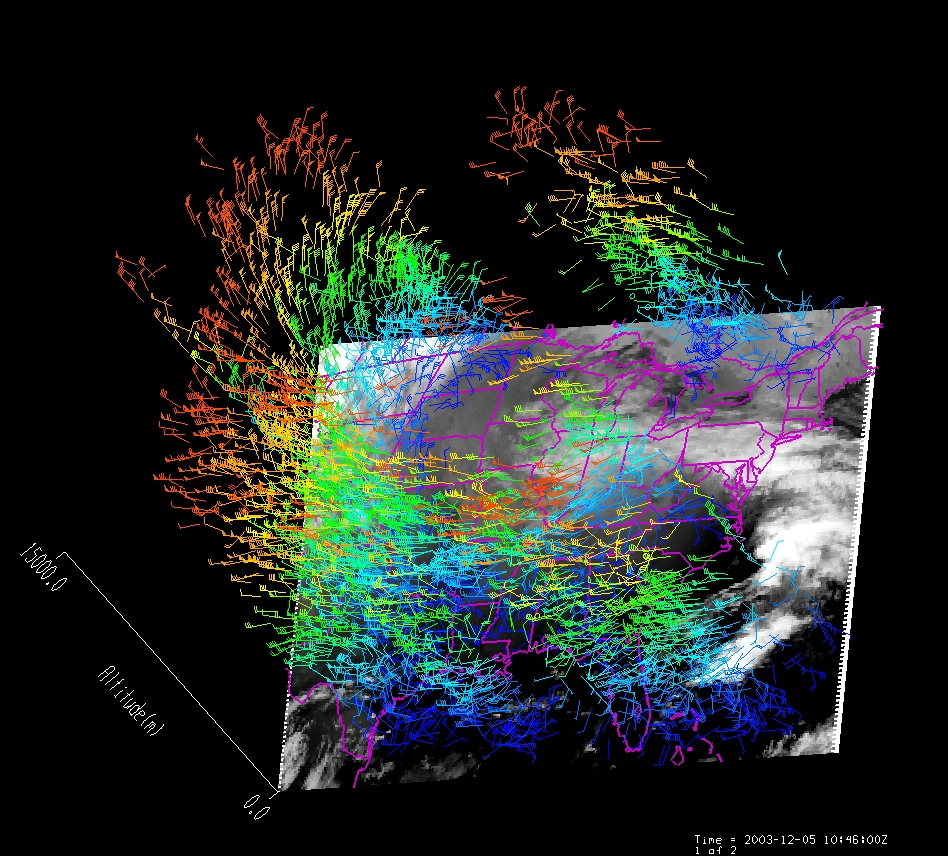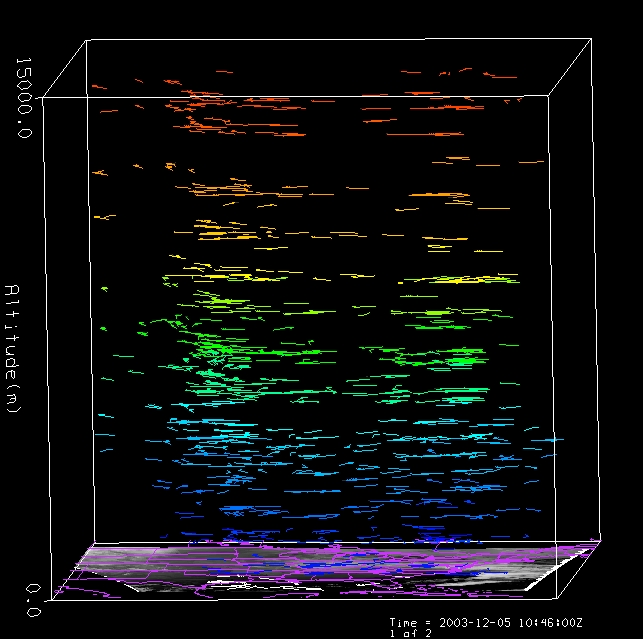
[ Archive ]

 |
CIMSS-NOAA Weekly Report
[ Archive ] |
 |
IN THE PRESS:
ITEMS FOR THE ADMINISTRATOR:
ITEMS FOR THE ASSISTANT ADMINISTRATOR:
ITEMS FOR THE OFFICE DIRECTOR, STAR:
MTSAT Intercalibration Update: Japan's geostationary imager, the Multi-Functional Transport Satellite (MTSAT)-1R, has undergone a series of calibration fixes, the most recent in mid-July, 2006, in order to remedy a cross-talk contamination issue in the 3.7 micrometer shortwave band. In intercalibration comparisons with the Atmospheric InfraRed Sounder (AIRS), the 3.7 micrometer band has shown great improvement in calibration accuracy. Mean brightness temperature differences with AIRS are now on the order of 1.1 K, which may represent a slight improvement over when Geostationary Operational Environmental Satellite (GOES)-9 was operating in that region. There may still be a problem due to crosstalk in cold scenes since at those low temperatures the crosstalk from the 6.75 micrometer water vapor band overwhelms the signal in the 3.7 micrometer shortwave band, but this needs more testing. (M. Gunshor, CIMSS, 608-263-1146)
Winds from the GOES Sounder Retrieved Moisture Fields:
An experimental approach to derive Atmospheric Motion Vectors (AMVs)
from Geostationary Operational Environmental Satellite (GOES) Sounder
retrieval information is being developed at the Cooperative Institute
for Meteorological Satellite Studies. The new method utilizes the
operational NESDIS AMV algorithm but applies it to constant pressure
level moisture analyses derived from GOES Sounder. By their nature, the
constant-altitude moisture fields overcome the problem of determining
heights for the resulting tracked AMVs. Preliminary results
demonstrating the feasibility of this new approach concept were
presented at the 8-th International Winds Workshop, Beijing,
China. The scheme has been implemented for near real-time
processing with GOES East and will soon include the GOES West Sounder
as well. (I. Genkova, NRC/NOAA-NESDIS Fellow, 608-265-8007,iliana.genkova@ssec.wisc.edu, S. Wanzong, CIMSS, C. Velden, CIMSS)

 (Click images to enlarge)
(Click images to enlarge)ITEMS FOR THE DIVISION CHIEF, CoRP
2006 IGARSS Conference: Bormin Huang served as co-chair of the 2006 International Geoscience and Remote Sensing Symposium (IGARSS) Data Compression Techniques session in Denver, CO, July 31-August 4. The Cooperative Institute for Meteorological Satellite Studies (CIMSS) satellite data compression team presented two talks: "Lossless Multiwavelet Compression of Ultraspectral Sounder Data" and "Real-Time DSP Implementation of 3D Wavelet Reversible Variable-length Coding for Ultraspectral Sounder Data Compression". (Bormin Huang, CIMSS, 608-265-2231, bormin@ssec.wisc.edu)
Other Meetings and Telecons:
(None)
VISITORS:
NEXT WEEK:
LOOKING AHEAD: